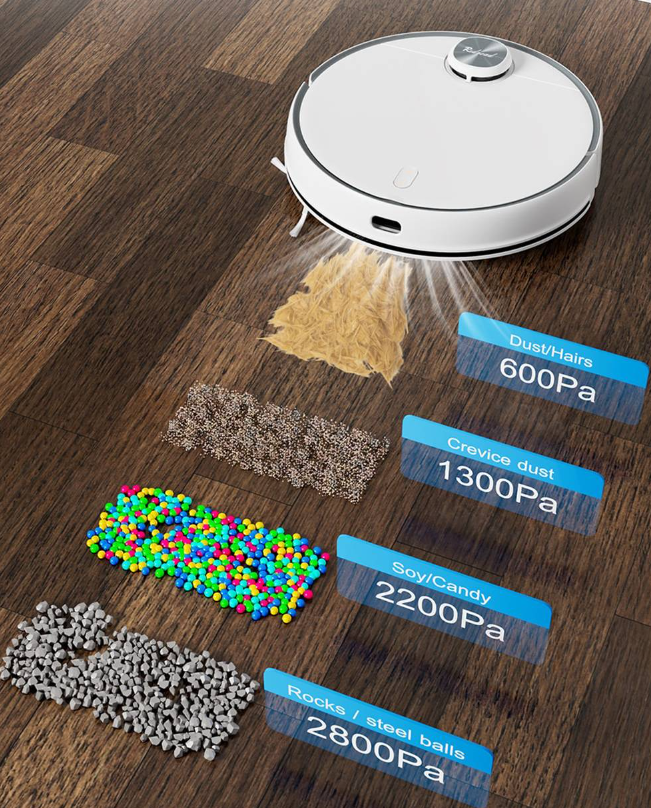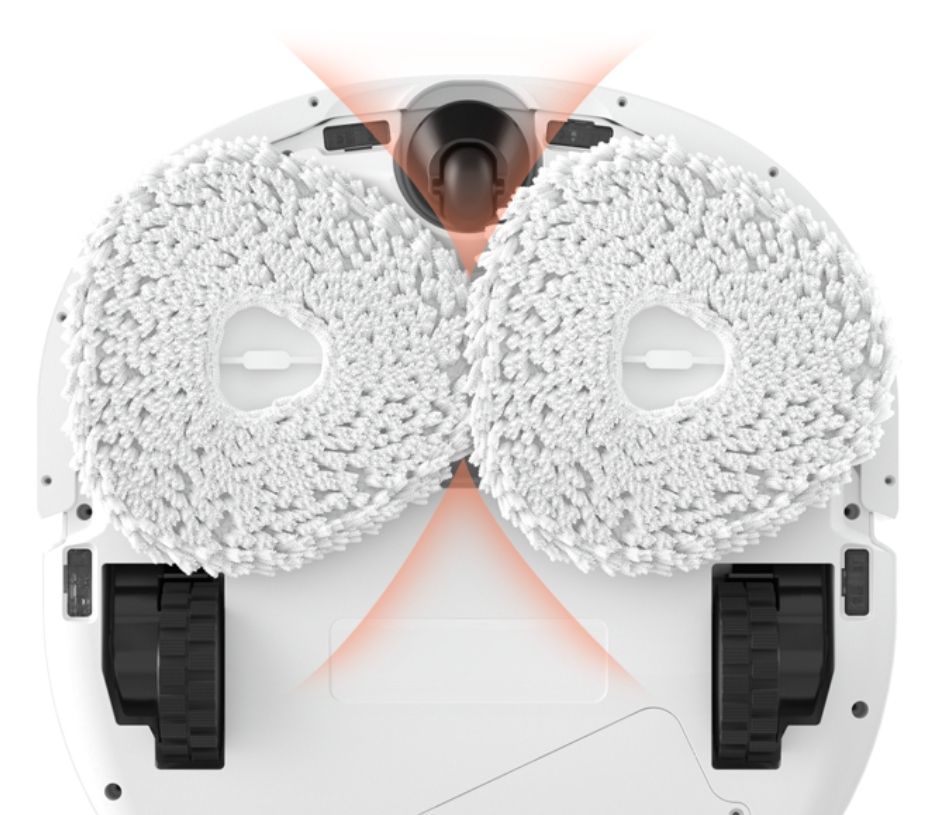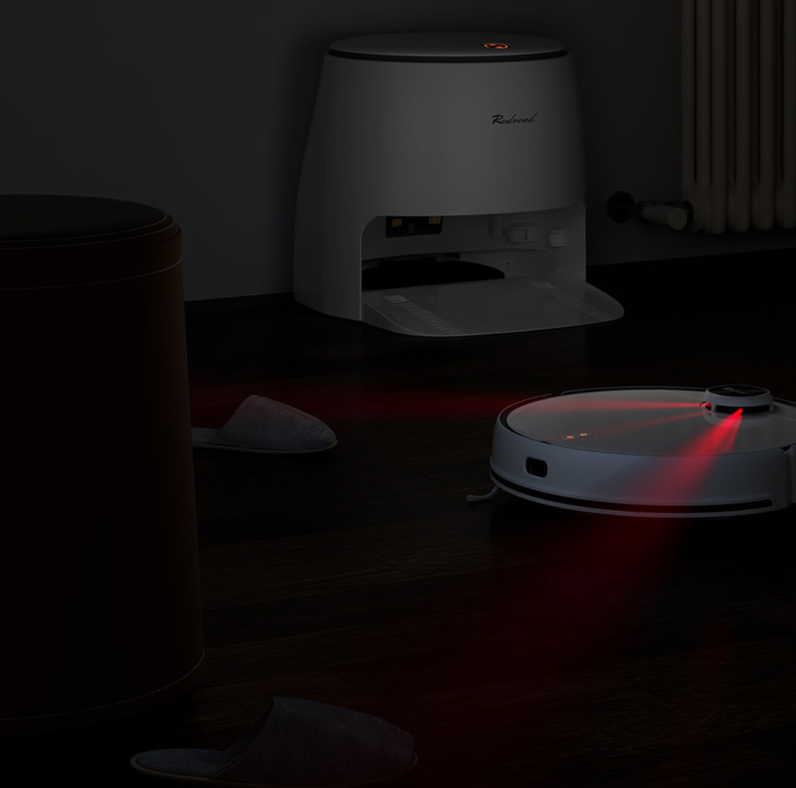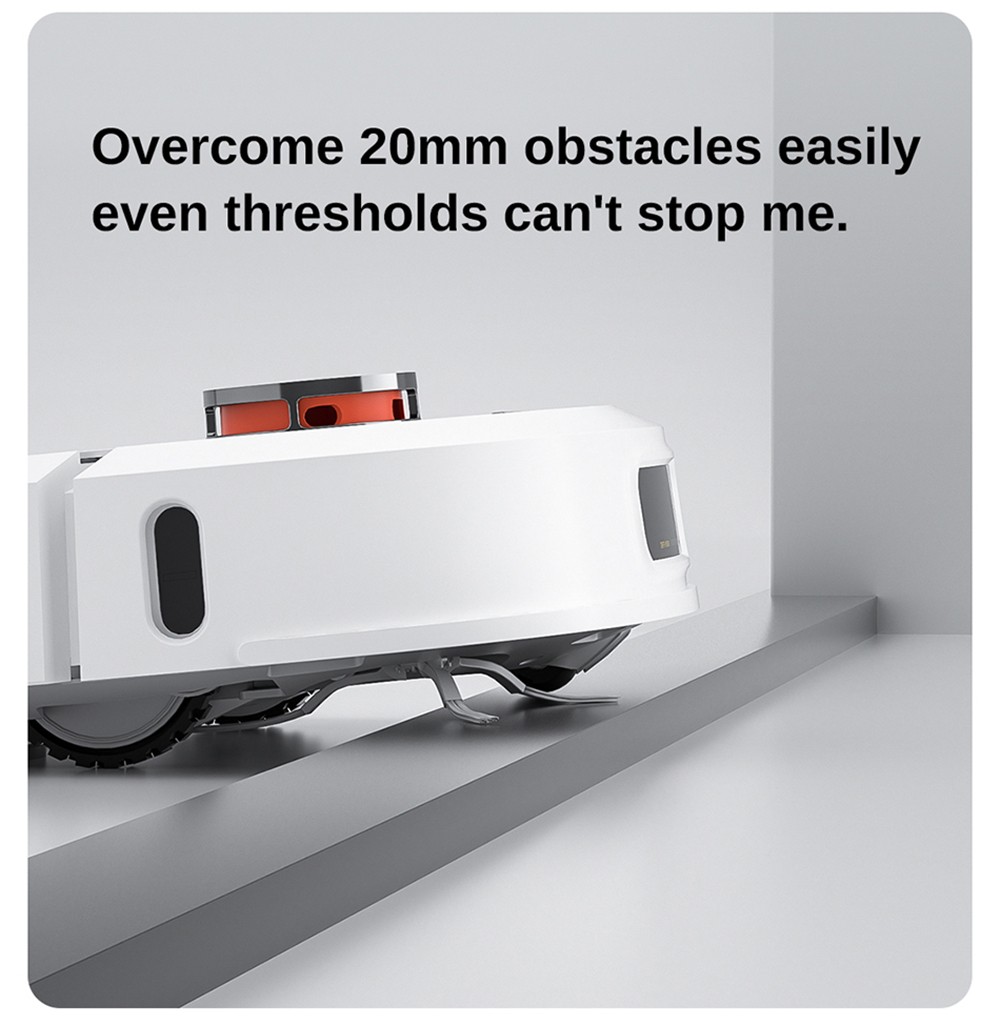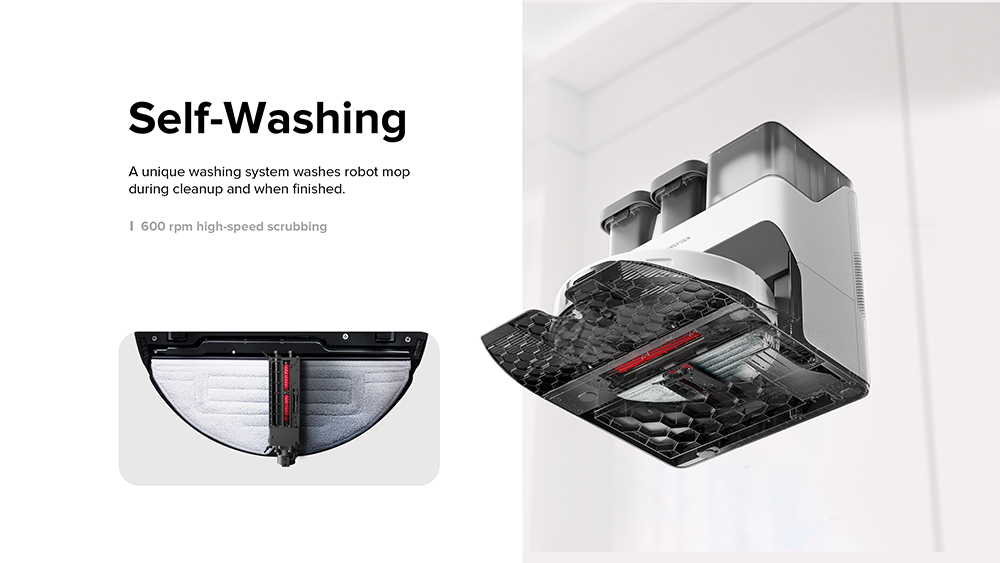Beginning
With the rapid development and application of technologies such as the Internet of Things and artificial intelligence, more and more smart home products have entered everyone’s daily life, especially young people. The robot vacuum cleaner is one of the main products, while do you know how to choose a robot vacuum cleaner? If not, this article will introduce you in detail.
How Does the Robot Vacuum Cleaner “Sweep”?
The working principle of the robot vacuum cleaner mainly includes two parts: “sweeping” and “robot”. And its “sweeping” function is mainly reflected in “suction” and “mopping”.
1. “Suction”
Robot vacuum cleaner mainly generates strong suction through the rotation speed of the motor, sweeps the debris together through the side brush, and then sucks them into the dust box. The speed of the motor can reach 20,000-40,000 rotations per minute, generating suction ranging from 2000-5000pa. The greater the suction power, the heavier debris can be picked up, so the suction power is one of the criteria for judging the cleaning ability of the robot vacuum cleaner.
2. “Mopping”
The sweeping robot will wash and mop the ground by vibrating or rotating. At present, the main ways of washing and mopping are two ways: flat plate vibrating washing and mopping and double-disc rotation.
Vibration mopping mainly relies on the front and rear high-frequency vibration of the mop to clean the ground stains. Generally, it can reach 3,000 times per minute, and the faster one can reach 10,000 times per minute. For the vibrating mop, in addition to the frequency, we should also pay attention to the amplitude, that is, how much the reciprocating distance is when vibrating. The higher the vibration frequency and the vibration amplitude, the better the cleaning effect.

The double-disc rotation mop mainly uses two large circular mop discs to rotate in opposite directions to scrub the floor to achieve the cleaning effect. Generally speaking, the effect of double-disk rotation is better than that of plate vibration. The higher the rotations per minute, the better the cleaning effect.
The Intelligence of Robot Vacuum Cleaners
The reason why it is called a robot vacuum cleaner is that it is indeed the product with the highest level of intelligence among the current household appliances, and it is also the product with the best combination of AI and IoT. Its intelligence level is mainly reflected in two aspects, one is the scanning and mapping, autonomous navigation, and obstacle avoidance capabilities of robot vacuum cleaners; the other is the automatic mop washing, automatic water replenishment, automatic dust collection, and other functions realized by many high-end products.
1. Navigation
Currently, there are two navigation technologies widely used in the market: one is visual navigation, and the other is laser navigation. Both are realized through the SLAM algorithm. SLAM refers to the process in which a moving object calculates its own position while building an environmental map or model based on the information of the sensor, and solves the problem of robots moving in unknown environments. According to different sensors, it is divided into vision-based VSLAM and lidar-based laser SLAM.
The biggest disadvantage of the visual navigation technology is that the mapping and modeling at this stage are not accurate enough. Some robot vacuum cleaner products using visual navigation technology are not accurate in distance measurement. In addition, visual navigation is easily interfered by ambient light, so it needs to be used together with other sensors to make up for the shortcomings. Its advantage is that the price is relatively low, and it is easier to be accepted by consumers.
The mapping and modeling accuracy of the laser navigation technology is higher, but its cost is relatively high. At present, laser + visual hybrid navigation solutions have appeared in high-end products, which can better realize navigation.
2. Obstacle Avoidance
The mainstream types of obstacle avoidance include monocular/binocular visual obstacle avoidance, lidar obstacle avoidance, 3D structured light obstacle avoidance, 3DTOF obstacle avoidance, and mechanical obstacle avoidance.
2.1. Visual Obstacle Avoidance
Monocular obstacle avoidance is taking photos through the camera on the robot, and then using machine learning to compare them to identify obstacles. The disadvantage is that it is a two-dimensional image and lacks depth-of-field information. If the obstacle is consistent with the environment, it is difficult to identify it. Binocular recognition can be regarded as a monocular upgrade. The principle is similar to that of the human eye. The 3D information of obstacles is constructed through the parallax of two monocular imaging, the recognition efficiency is improved, and the obstacle avoidance effect is also better.
2.2. Lidar Obstacle Avoidance
LiDAR obstacle avoidance is to determine the distance and outline of obstacles by emitting laser light to the surface of the object and analyzing the intensity of reflected light, the length of time, and other factors. The advantages are fast response, strong anti-interference ability, and can adapt to various light environments, which is much better than traditional infrared obstacle avoidance.
2.3. 3D Structured Light Obstacle Avoidance
The accuracy of 3D structured light obstacle avoidance is very high, but the cost is relatively high, and there are certain requirements for ambient light. Its principle is similar to lidar, by emitting infrared rays, and then statistically analyzing the intensity and time of infrared rays emitted by objects, and then calculating the depth of the object’s surface, and finally identifying obstacles.
2.4. 3D TOF Obstacle Avoidance
3D TOF is used to realize the AR gameplay of iPad Pro. Its working principle is that the infrared light source emits high-frequency light pulses to the object, and then receives the light pulses reflected from the object, and calculates the distance between the measured object and the camera by detecting the round-trip time of the light pulses.
2.5. Mechanical Obstacle Avoidance
When something hits the parts of the robot vacuum cleaner, the machine will move away.
3. Automatic Mop Washing, Automatic Water Replenishment, Automatic Dust Collection
The most troublesome thing in the use of the robot vacuum cleaner is washing the mop, replenishing water, and emptying the dust box. At present, high-end products are already realizing the automation capabilities of these functions.
How to Choose a Robot Vacuum Cleaner?
In addition to the price, you also need to consider the following factors when purchasing a Robot Vacuum Cleaner: cleaning ability (suction & mop form), navigation and obstacle avoidance ability, automation ability (automatic backwashing mop, automatic water replenishment, automatic dust collection), and other functions (drying, sterilization, noise, etc.).
1. Cleaning Ability
Garbage cleaning: the greater the suction, the better the cleaning effect (generally choose more than 2500pa).
Ground mopping and washing: in the mopping method, double-disc rotation is better than flat-plate vibration, and the higher the rotation speed of the double-disc rotation mop, the better the cleaning effect; the higher the vibration frequency of the vibrating mop, the better the cleaning effect.
2. Navigation and Obstacle Avoidance
The selection order of the navigation method: laser + vision > laser > vision > no navigation
The selection order of obstacle avoidance ability: 3D structured light > 3DTOF > lidar > binocular vision > monocular vision > mechanical
3. Automation Capability
The fully functional robot vacuum cleaner can free your hands. According to the degree of manual trouble and technical maturity (technical maturity is related to cost performance), the selection order can be: automatic mop washing > automatic water replenishment > automatic dust collection
4. Other Functions
Drying function: hot air drying > cold air drying > no drying
Sterilization function: silver ion sterilization > electrolytic water sterilization + ultraviolet sterilization > electrolytic water sterilization
Noise: the lower the better. 40 decibels: the hum of a refrigerator; 60 decibels: the sound of a normal conversation; 70 decibels: equivalent to walking in a downtown area; 85 decibels: a car passing by on the road
Machine height: If the body is too high, it may affect the cleaning of the sofa bottom and bed bottom. Under normal circumstances, laser navigation has a protrusion of the laser sensor, which is generally 9-10cm. Pure visual navigation has no protrusion, which can reach below 8.5cm. You can choose according to your own situation.
Conclusion
There are many hot-selling well-known brands on Geekbuying, such as Roborock, ROIDMI, Xiaomi Mijia, Proscenic, ILIFE, etc. These brands of Robot Vacuum Cleaners include ordinary basic models and intelligent high-end products. If you want to free your hands more, I would recommend Roborock S7 Pro Ultra, ROIDMI EVA, and ILIFE V8 Plus. Alternatively, you can also choose from the link below.
https://www.geekbuying.com/Search?keyword=Robot+Vacuum+Cleaners&c=1972

